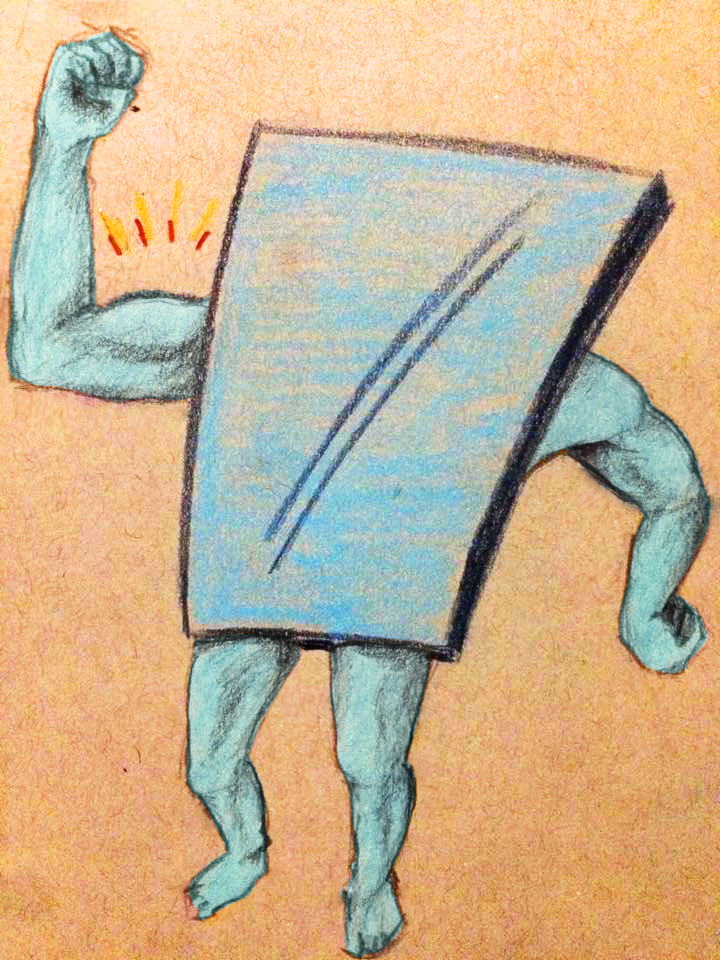The days of sweeping up little pieces of a glass cup you accidentally dropped, feeling overwhelming panic when your iPhone hits the floor (yes, the screen is probably cracked), or having to cover that broken window with good ol’ saran wrap and cardboard might be over.
Researchers at McGill’s department of Mechanical Engineering, led by Francois Barthelat, have developed a new technique that increases the toughness of glass by a factor of 200.
The research was inspired by, of all things, seashells. Barthelat explains that they are the “perfect models of nature to mimic, because of their very complex architecture.” Seashells (for example mollusk shells) are composed of mainly brittle ingredients, like chalk, but their inner layer contains mother of pearl (or nacre), a natural material composed of microscopic patterns known to be extremely strong and tough. Barthelat and his team focused their work on how seashells behave and deform, and specifically studied the internal weak boundaries of materials like nacre. Using their understanding of these boundaries, the research team used lasers to engrave jigsaw-like networks of 3D micro-cracks into glass slides, mimicking these weak boundaries.
Their technique amplified the toughness of the glass, overcoming its main downfall of being brittle. The micro-cracks served as a control mechanism for stopping other cracks from branching and becoming larger, absorbing energy from the impact in the process. By segmenting the glass material and creating weak interfaces, they were able to guide and localize the damage.
Using nature as a muse for innovative and sustainable solutions, such as synthesizing new material, is referred to as biomimicry, which translates to “imitation of nature,” from the Greek words bios and mimesis. Barthelat emphasizes the importance of drawing inspiration from nature, calling the process as common sense, as it draws upon natural materials that have withstood the test of time.
Mohammad Mirkhalaf, a former PhD student in Barthelat’s Biomimetic Materials Lab, and current postdoctoral researcher, expanded upon this. “Natural materials have evolved for millions of years, they are optimized materials. For instance, seashells are 3,000 times tougher than the materials they are made of… you can learn a lot from how they deform and behave and decide how these mechanisms translate into synthetic materials for your work.” Mirkhalaf went on to highlight the importance of this research, explaining that “synthetic materials are really reaching their limits and engineers can’t do much more, there are ways of improving these materials… our inspiration is optimization of these materials and providing new and better materials to work with.”
So what would happen if you were to drop this new, tougher glass? Well, according to Barthelat, nothing really. “It would deform a little and absorb the energy from the impact.” Rather than shattering into little pieces, which you somehow manage to find weeks later (even after a thorough clean), the glass just bends or dents upon impact. Although Barthelat does mention there are current height limitations, as the glass would shatter if dropped from great heights, they are trying to improve this through more research, by using “an impact tower, where you drop stuff and see if it breaks.”
There has been some concern expressed over how this glass is produced and if it would cause recycling problems, but Barthelat was quick to dismiss these worries stating that the “glass has the same properties, we don’t change the chemistry, we are just putting in defects, micro-cracks, it’s very environmentally friendly.” He also added that the glass “is actually cheaper to produce” compared to current manufacturing processes.
Though tight-lipped, Barthelat said they “are currently working with companies for specific applications,” giving no specific timelines. He mentions that the applications are endless, impacting industries that produce “windows, drinking glasses, electronics, and anywhere you see glass.”
The team is now looking to expand their research to other materials like ceramics. Barthelat is very excited to “explore the realm of applications,” referring to this research as a “breakthrough,” sentiments Mirkhalaf shares. “The question is, can we do what nature does?” he says. “I’m excited because I think it’s the next generation of materials,” Mirkhalaf adds.
Mirkhalaf described his PhD research as an “amazing experience.” His advice to future students wanting to get into academic research is to “think hard about what you’re doing and don’t get upset too easily.” Research can be a lengthy and difficult process, which is why it is important to remain determined and continue. Who knows what other breakthroughs will occur when your determination is as tough as glass.

